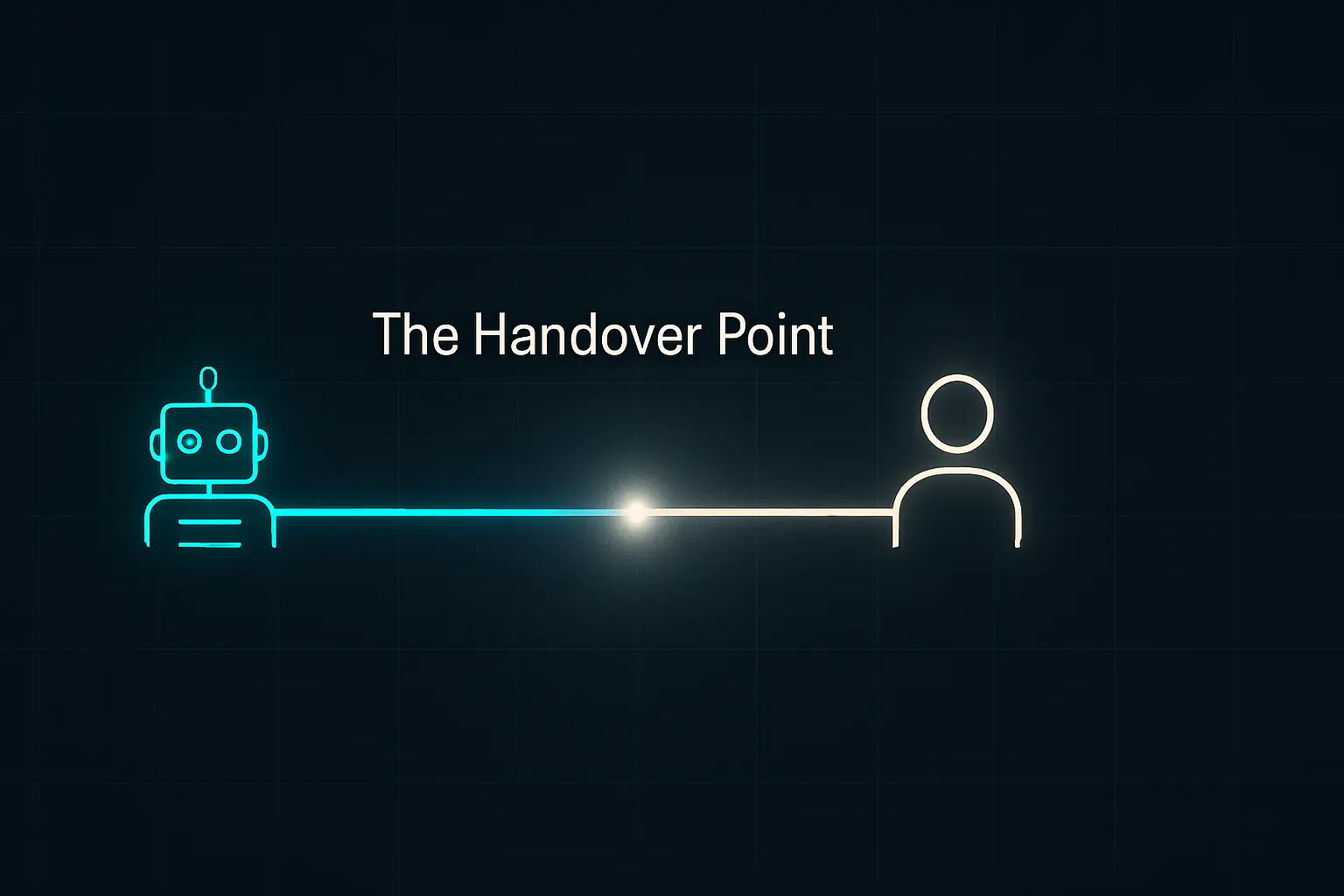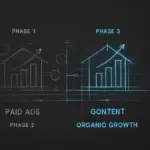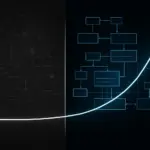The most important part of our automation isn’t what it does; it’s when it stops. This seems counterintuitive. We spend countless hours building systems to handle tasks without human intervention, yet the most critical design choice we make is deciding where to deliberately break that automation.
For years, I’ve been obsessed with building and documenting systems that scale. Across my projects at JvG Technology, Mehrklicks, and even in the niche markets of Iberosattel, the goal is always the same: create robust, repeatable processes. But in our pursuit of efficiency, it’s easy to fall into a trap.
A recent PwC study found that 60% of consumers feel companies have lost the human element of customer experience. It’s not just a perception; it’s a systemic failure. The ‚automation paradox,‘ as some call it, suggests that poorly implemented automation can create more complex problems and alienate users.
This risk is especially acute during client onboarding. That’s why we’ve focused on perfecting what I call the ‚Handover Point’—the exact, data-driven moment our automated system flags a real person to step in. It’s not a system failure; it’s the system working as designed.
What Exactly is the Handover Point?
The Handover Point is a predefined trigger within an automated workflow that pauses the sequence and notifies a team member to make personal contact. It’s the bridge between machine efficiency and human empathy.
Instead of letting a new client drift through a soulless sequence of emails and tutorials, the handover is designed to intervene at the precise moment a human touch will have the greatest impact.
This isn’t about random check-ins. It’s about the systematic, surgical application of human energy where it matters most. For anyone interested in designing scalable client workflows, this concept is the centerpiece. The system handles the predictable, repeatable steps, freeing up our team to focus on the nuanced, high-value interactions that build real relationships.
![Image 1: A diagram showing a workflow with a clear ‚Handover Point‘ marked between automated sequences and human action.]
Why a Defined Handover is Non-Negotiable
Moving from a purely automated flow to this hybrid model was a deliberate choice, grounded in some startling data about customer behavior.
The goal of onboarding isn’t just to teach someone how to use a product; it’s to build trust. According to McKinsey, 80% of consumers are more likely to buy from a brand that provides personalized experiences. A timely, relevant message from a real person is perhaps the most powerful form of personalization there is. It shows we’re paying attention, validates the client’s decision, and, as Edelman research shows, builds the trust that 78% of customers consider essential for making a purchase.
This connection also has a tangible financial impact. Research from Motista reveals that customers who feel an emotional connection to a brand have a 306% higher lifetime value. The Handover Point is our primary mechanism for creating that connection. It’s an investment in a long-term relationship, not a short-term transaction.
Finally, a defined handover is a critical risk-mitigation strategy. Zendesk data shows that 50% of customers will churn after just one unresolved negative experience. How many of those experiences begin as simple, quiet confusion during onboarding? The handover allows us to proactively find that confusion and resolve it before it becomes a reason to leave.
The Logic Behind Our Handover: A ‚Complexity vs. Value‘ Framework
Deciding when to trigger a handover can’t be based on guesswork. We developed a simple framework to guide our system’s logic: a ‚Complexity vs. Value‘ matrix. We then map every step or potential issue in our onboarding process onto this grid.
Low Complexity, Low Value: These are perfect for pure automation. Think of a standard welcome email or a confirmation of a completed step.
High Complexity, High Value: This is a mandatory Handover Point. If a client is trying to integrate our system with a complex, proprietary API, we don’t send them a help doc; we have an engineer reach out personally.
Low Complexity, High Value: These are my favorite—opportunities for a ’surprise and delight‘ human touch. For instance, if someone mentions in an onboarding form that they’re using our system for a particularly innovative project, a quick, personalized ‚that’s a fascinating use case‘ email from me or a team lead can build incredible goodwill.
This framework ensures our human resources are directed toward moments that strengthen the relationship, solve difficult problems, and create lasting value.
![Image 2: A simple chart or graphic illustrating the ‚Complexity vs. Value‘ matrix for deciding on automation vs. human touch.]
Our Key Triggers: The Data That Activates the Handover
Our framework is the ‚why,‘ but the data triggers are the ‚how.‘ We’ve found that the most effective handovers are triggered by a combination of behavioral and contextual data points. The system architecture we’ve developed across JvG Labs projects is designed to capture these signals quietly in the background.
Behavioral Triggers (Signals of Confusion or High Intent):
These data points suggest a user’s mental state.
Help Doc Loops: A user views the same three help articles in a 10-minute span. The system flags this as a potential ’stuck‘ point.
Feature Stagnation: A client completes steps 1-3 of setup but doesn’t touch the crucial step 4 (‚Invite Team Members‘) for over 48 hours. This is a common indicator of an internal blocker or misunderstanding.
Rapid Logins/Logouts: A user logs in and out multiple times in a short period without completing any key actions. This can signal frustration with the interface or a technical issue.
![Image 3: A screenshot or mock-up of a dashboard showing behavioral triggers like ‚multiple logins,‘ ‚feature non-use,‘ or ‚help doc views.‘]
Contextual & Firmographic Triggers:
This is about who the user is and what they tell us.
High-Value Profile: If a user signs up with an email from a Fortune 500 company or a known enterprise in our target industry (e.g., solar manufacturing for JvG Technology), the system automatically flags them for a proactive welcome from a senior team member.
Keyword Mentions: We include an optional open-text field in our onboarding form asking, ‚What’s the main challenge you’re hoping to solve?‘ If the response includes keywords like ‚frustrated,‘ ‚migrate from [competitor],‘ or ‚urgent deadline,‘ it triggers an immediate human review.
The Handover in Action: A Real-World Example
A few months ago, our system flagged a new user for one of JvG Technology’s solar production simulation tools. The user, an engineer from a major European manufacturer, had stalled on the ‚Load Historical Production Data‘ step. This is a high-complexity, high-value moment.
The automated system detected that he had attempted the upload three times and had viewed the same two help docs repeatedly. Handover triggered.
Instead of another automated email, one of our lead systems engineers received a Slack alert with the user’s context. He recorded a quick, two-minute Loom video. He didn’t sell anything. He just said, ‚Hi [Name], I’m [Engineer’s Name]. Saw you were working with the data import. It can be tricky depending on the format. A common issue is X, so you might want to check that. If not, just reply to this email, and we can hop on a quick call.‘
The client responded within minutes, relieved. The problem was solved, and more importantly, a relationship was formed. He saw us not as a software vendor but as a team of fellow engineers. That single interaction is worth more than any automated email sequence we could ever build. It’s a pattern we refine constantly in our marketing automation experiments.
Frequently Asked Questions (FAQ)
How do you decide what the first human interaction should be?
The interaction depends on the trigger’s severity and context. A ‚feature stagnation‘ flag might result in a low-touch, friendly check-in email. A ‚multiple failed attempts‘ flag on a critical step, like in the JvG example, warrants a more direct, expert-led intervention like a personalized video or a direct offer to chat.
Doesn’t this create more work and defeat the purpose of automation?
It’s about deploying work where it has the highest ROI. The ‚Automation Paradox‘ shows that 100% automation isn’t the goal. This system creates smarter work, not more work. A five-minute personalized video can prevent a five-hour support ticket down the line and save a client who might have otherwise churned in silence.
What tools do you use to track these triggers?
The specific toolset isn’t as important as the logic. We use a combination of our CRM (like HubSpot), event-tracking platforms (like Segment or Mixpanel), and sometimes custom scripts that feed data into a central dashboard. You can start simply with triggers available in your existing marketing automation software and build from there.
How early in the onboarding process should the first potential handover occur?
As soon as a significant moment of friction or opportunity appears. Sometimes, this can be within the first hour of signup if a user from a key account registers or if they fail a critical first activation step. The key is to be helpful, not intrusive.
Next Steps: Refining Your Own Handover Point
The ultimate goal of a great system isn’t to remove humans from the equation, but to deploy their unique skills—empathy, creativity, and complex problem-solving—at the moments of greatest impact. Automation should handle the rest.
If you’re looking to implement this, start with a simple exercise. Map your current client onboarding journey. Ask yourself: at what points are my clients most likely to feel confused, frustrated, or alone?
That’s your first Handover Point. Start there.




